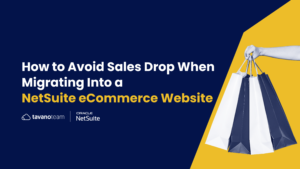In the eCommerce world, returns are impossible to avoid. We understand not everyone will be satisfied with the product once it arrives at their home because, as much as we would like to ignore this, it’s just not the same to see a product in real life as to see it online. We can do our best to make it the most similar possible. But at least, for now, that’s the reality. However, there are some ways to significantly reduce return rates, and today, we’ll share them.
If you are like most online shoppers, you check the return policy before you buy a product, and data shows that 66% of shoppers do the same thing.
Most shoppers, 81%, will only complete the transaction if the vendor offers free returns and over 90% say that if the product return process is simple, they will buy again.
Return policies are important to online consumers because returns affect nearly 30% of products ordered online, compared to less than 9% in traditional stores.
It’s no secret that most retailers view returns as a headache, but it’s part of doing business. Enacting practices to make the process smoother and easier, will ensure that customers return to your store.
Your return policy should feature reasonable terms. According to the National Federation of Retail, fraudulent returns do happen, but they account for just 10% of returns. When establishing your return policy, keep in mind that 90% of your customers are honest and reasonable; therefore, place a high priority on return policies when buying a product. Offering a 30 to 90-day return policy on non-perishable goods will encourage customers to buy from you. Also, while it is necessary for you to ensure that returned merchandise is in good condition, customers expect reimbursement for returned goods quickly. Refunds take longer with mailed returns but being prompt with refunds will create customer loyalty.
While chronic and fraudulent returns are uncommon, quality ordering management systems will identify patterns of abuse of your policy. It is a good practice to monitor customer history and take steps to discourage the behavior of chronic returns, such as carefully examining products before processing a refund. Delaying reimbursement until after inspection of merchandise is a good standard practice.
Permissive policies are not the only reason for high return rates. Returns will vary based on products and customers. Size, product quality, customer expectations, and product images that differ from the actual merchandise can also increase returns. While we can’t control what size a customer orders, accurately representing merchandise will reduce returns in descriptions and images. Nowadays, companies like Cylindo create 3D product visualization renders that allow the client to really get in there, zoom in on the product, see what material they’re made of and how they look from every side. Again, this still won’t avoid a minimal amount of returns, but it will lower them significantly because the client will know exactly what to expect.
Offering free shipping and returns creates a potent combination to entice customers to order. Recent studies show that consumers are more interested in free shipping than fast delivery. Making returns processes and policies easier than your competitors will give you a competitive advantage. Your online presence is a strategic advantage, and a convenient return policy can leverage it.
Are you already doing all these things to reduce returns and still not satisfied with the results? Contact our experts so they can study your particular case and help you take your business to the next level.




